18 Tips and Examples to Write a CisionOne Pitch

One of the services I've been using recently for marketing, link building, and general awareness, is CisionOne (formerly called Connectively, or better known as Help A Reporter Out / HARO).
CisionOne is, as you may have guessed, a Cision company (alongside other outreach and engagement platforms like PRWeb and PRNewswire) that links up reporters, bloggers, and journalists with authoritative sources.
The general idea is simple. A journalist signs up because they have a question they want to ask industry sources. Rather than do the legwork of tracking down those sources and interviewing them personally, they use this platform, where sources come to them. They write up a scenario and question, called the "Media Opportunity" on HARO.
You, as the relevant authority for the topic, can find the media opportunity via their search, via saved searches, via keyword notifications, and via the daily email digests CisionOne sends out. When you find one that looks like it is something you can answer, you can draft a pitch.
Your pitch includes a few fields. First is the Bio. You can create and save a bio in CisionOne, which contains basic information about who you are, similar to an author bio for a blog post. With paid plans, you can create several bios, which fill out different kinds of information for different kinds of media opportunities. For example, I might create a bio that focuses on my content marketing experience, a different bio that focuses on my blog management and technical SEO experience, and a third bio that focuses on my motorsports hobby.
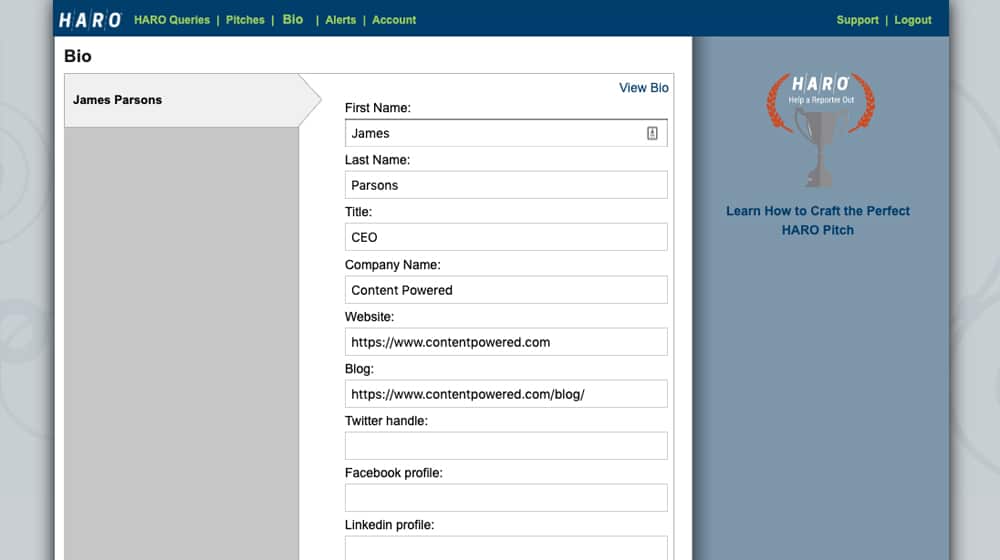
Other fields include a subject line and a response, basically just as the subject and body of an email. You draft up your pitch in response to the question the reporter is asking. Once you submit it, the reporter can see it and choose what to do with it.
Reporters can choose to ignore or reject your pitch. They can also choose to mark your pitch as accepted and use it. Also, sometimes they can use your pitch but ignore the CisionOne system. It's a bit frustrating sometimes, but that's just the way of things.
To get the highest level of success possible out of CisionOne, you want to make sure you're creating the best possible pitches for every relevant media opportunity. That's why I've put together this list of tips; to help you succeed where I've succeeded.
 30 Second Summary
30 Second Summary
You can use Connectively (formerly HARO) to connect with journalists and get backlinks for your site. You'll find media opportunities where reporters need expert sources, and you can send them your pitch. You need to act fast and customize each response - templates won't work well. When you write your pitch, you should lead with relevant experience and directly answer their question. You'll improve your chances by getting paid access for early opportunities and building relationships with journalists who use your responses.
1. Get Your Pitch In Early
CisionOne media opportunities are time-sensitive. When they're added to the site, CisionOne moderators look it over, make sure it's a valuable and legitimate opportunity, and release it. It's given to premium subscribers first, and then it's opened up to the general pool of free users. You have to get in quickly with your pitch if you want it to be read and accepted.
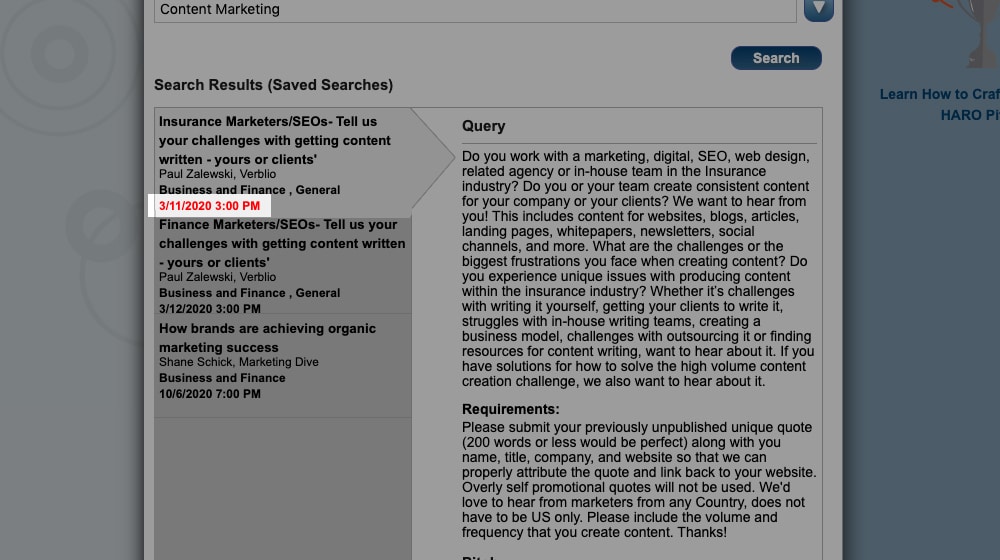
The fact is, most of the journalists reading pitches are going to browse incoming messages until they get one that satisfies their needs, and that'll be that. They might get dozens or hundreds more pitches they'll ignore because they have what they need. Getting in early is crucial.
2. Focus on Relevant Media Opportunities
CisionOne are systems where quality and relevance are significantly more important than quantity. If you make a template and shoot out 500 pitches in a day, you're likely to be ignored 500 times. Spend the time to read a media opportunity thoroughly before you reply to it with your pitch.

My personal advice is to do a little extra research. You can see the site, author, and some other information about the journalist, so research their website and see how you might fit in there. Tailor your pitch not just to their topic, but to them, like you were writing a guest post.
3. Upgrade to an Expert Bio
One of the paid features of CisionOne is the ability to create an expert bio with all your information that you can automatically send alongside your pitch. You only get one for the cheaper plan, but higher price plans give you more than one.
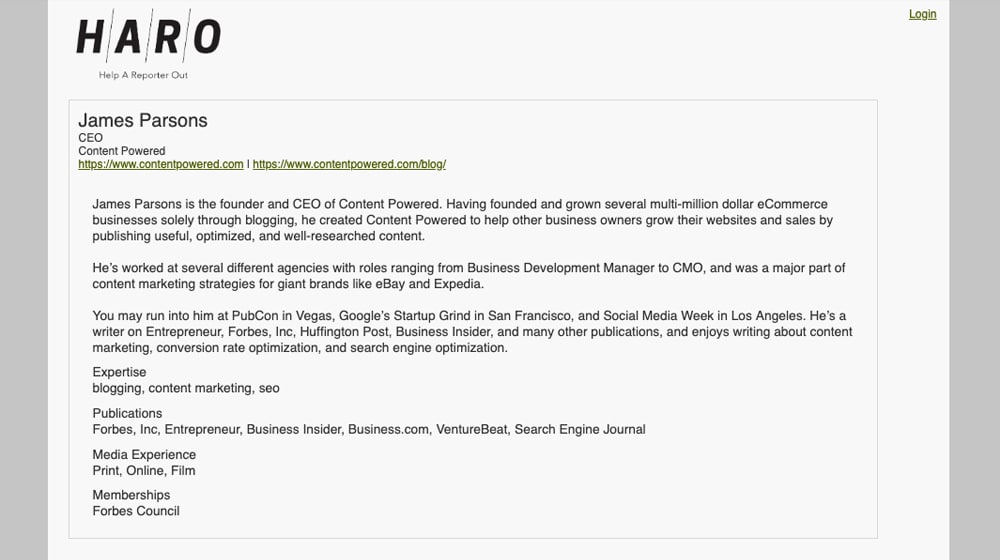
If you're paying at least $50 per month, you get several bios you can customize to suit different aspects of your expertise. After all, you're an expert in more than one subject, right? One of them can even focus on your hobbies if you have space to spare.
4. Lead with Your Experience
Your bio will give some information to the journalist on the other end, but you want to start off strong. Before you start talking about what kind of information you have to answer their question, write a paragraph about who you are and why you're an authority in this topic. Do you run a large blog about it? Do you have a degree in it? Have you performed deep studies on the subject?
Some people also recommend adding a headshot, contact information, and other encouragement to reach out. I prefer adding this kind of information to the end, rather than the beginning, but I haven't tried both ways often enough to know for sure if one works better than the other.
Note that I say "a paragraph" here. Keep it minimal. The journalist has a deadline and if they have to read three paragraphs of fluff, they're going to skip you entirely.
5. Make Certain to Respond to the Question
This might sound like it shouldn't even need to be said, but I've found that some people are a little bad at asking questions, and many people are bad at reading them. This isn't just for CisionOne; I've seen the same behavior on Quora, on Facebook, and in emails when I send out more personal contacts to individuals. People skim, they don't read. It's easy to misinterpret a question from a CisionOne media opportunity.
For example, here's an actual media opportunity:
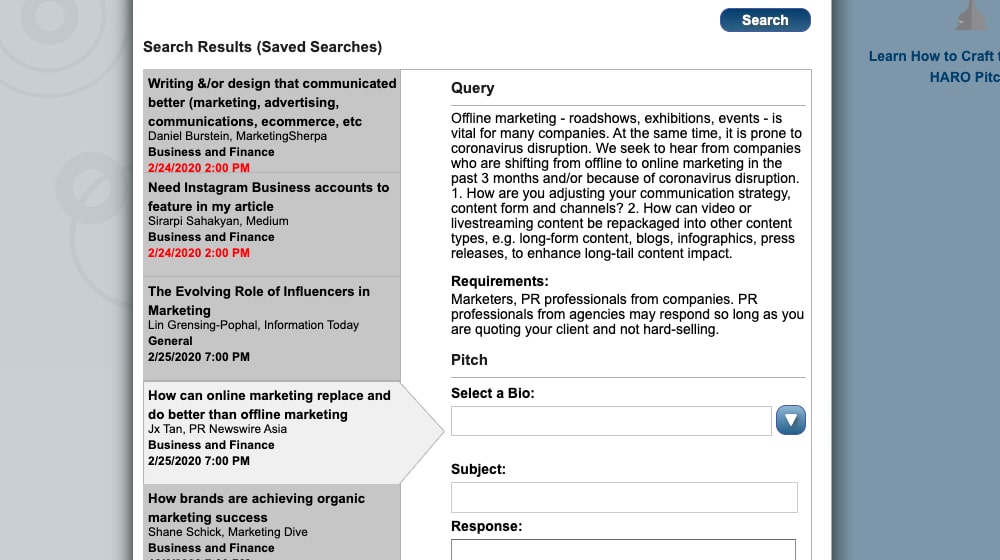
How would you answer this? The temptation is to focus on their first question, but the second one, about video content being repackaged, is a tricky part. Some people might respond about how to repackage content as a video. Others might ignore part two and just answer part one. Answering both appropriately would be key to this opportunity.
6. Avoid Templates
A lot of sites that talk about using CisionOne offer pitch templates that you can use. You can try them if you want, but I highly recommend avoiding them. Why?

Media opportunities on CisionOne are very narrow and specific. A template doesn't save you any time beyond, maybe, not having to copy and paste your contact information. Something like AutoHotKey can do that just as easily. By the time you customize a template for the opportunity you're seeing, you've basically had to rewrite the whole thing.
Also, templates become popular. The journalist reading all these pitches is likely to come across multiple people using the same template, especially if it's from one of the first Google results about CisionOne tips and trick. Just like getting form submissions in your email, you're liable to ignore a template-based pitch out of hand. I know I would unless there was some specific reason to pay attention, like recognizing the name of the person submitting the pitch.
7. Be Who They Want
Many media opportunities on CisionOne have a requirements section. The journalist wants people in a specific role or with specific experience. The example opportunity I linked above has it. If you don't match that set of requirements, your pitch is going to be ignored. You have two options here.
The first and generally better option is to ignore the opportunity and work on a pitch that is more likely to be accepted. Focusing on the battles you can win is generally the way to proceed.
The other option is to contort yourself to meet their needs. For example, you might be an entrepreneur with a small company, no more than five employees and contractors at most. You might not technically have the role of Marketing Manager, but who else does? You can assign yourself the role, assuming it's something you do.
I can't guarantee this will get you much more attention than otherwise, but you can give it a try for Hail Mary pitches on good blogs and high DR sites.
8. Find a Unique Pitch
If you've ever looked at Quora, you've probably seen questions where there's one good answer, and then five or six other people posting slightly worse, less well-written, shorter versions of the same answer. You might think that the best answer was written later to out-do them, but you might be surprised to find that a lot of people just copy answers poorly. It still gets their name there, after all.
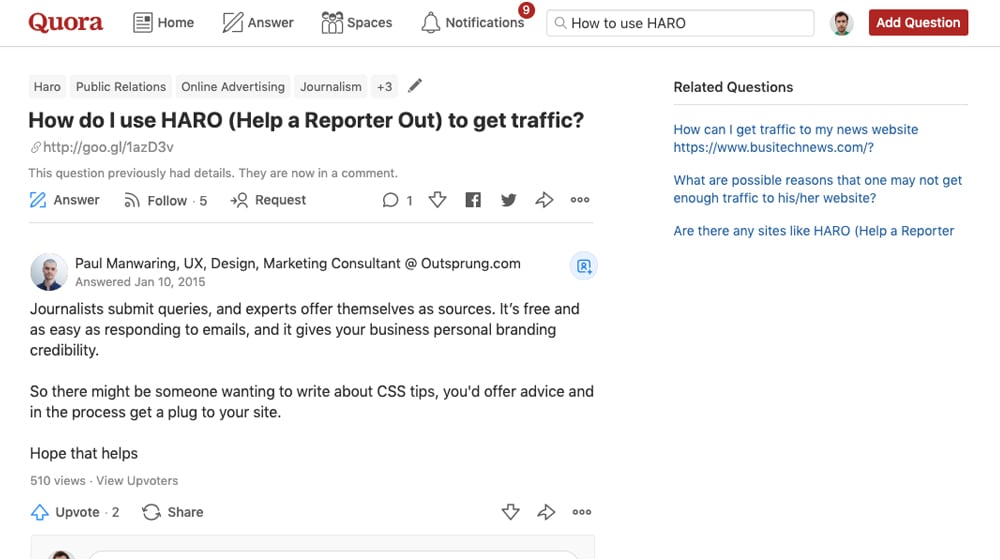
CisionOne has a similar problem: a lot of other people are competing for the attention of the journalist, and they'll be submitting pitches based on the first answer they can think of. If you think of the same answer, you're just going to be ignored. Try to come up with something a little off-beat or unique in some way to stand out from the rest.
9. Don't Get Salesy
I know a few marketers who have a habit of turning everything into a sales pitch. No matter what the content is they're writing, there's always some way they work in a pitch for their products. Don't do that.
CisionOne is about information and citations. Unless the reporter is specifically asking for people who have X category of product to respond – at which point talking about your product proves you have it – you shouldn't mention much of anything beyond your company name and what you do. You're not here to sell the journalist, you're here to showcase your experience and get a backlink.
10. Work with Others
If you run or are part of a mid-sized or larger organization, CisionOne can still be of great benefit to your website, and you have even more resources available to you. For all of those requests where there are specific requirements for a person's role, check to see if you can get the person who serves that role in your company on board. Getting the direct line to the appropriate person goes a long way.
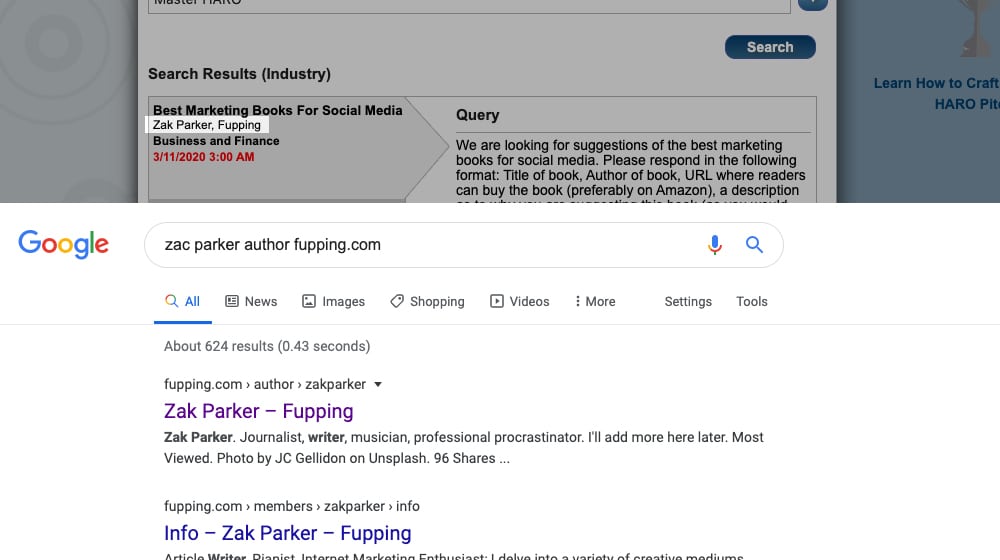
I've personally secured mentions through CisionOne just by working with the author back-and-forth through email conversations.
11. Check the Site Frequently
Since response time is crucial for success on CisionOne, what you really need to do is be checking constantly for new opportunities. If you pay for an account you can get keyword alerts, though you only get 1 or 3 keywords for the lower tiers. You can also set up alerts on your phone, and set alerts with your email to notify you when a CisionOne email arrives. Beyond that, you just have to keep checking the site. I like to save a few searches as well, so I don't have to go through the trouble every time.
12. Promote Your Citations
When a reporter uses your citation in their piece, run it through your promotion engine. Post it on social media, link to it in a relevant blog post if you can, you know the drill.
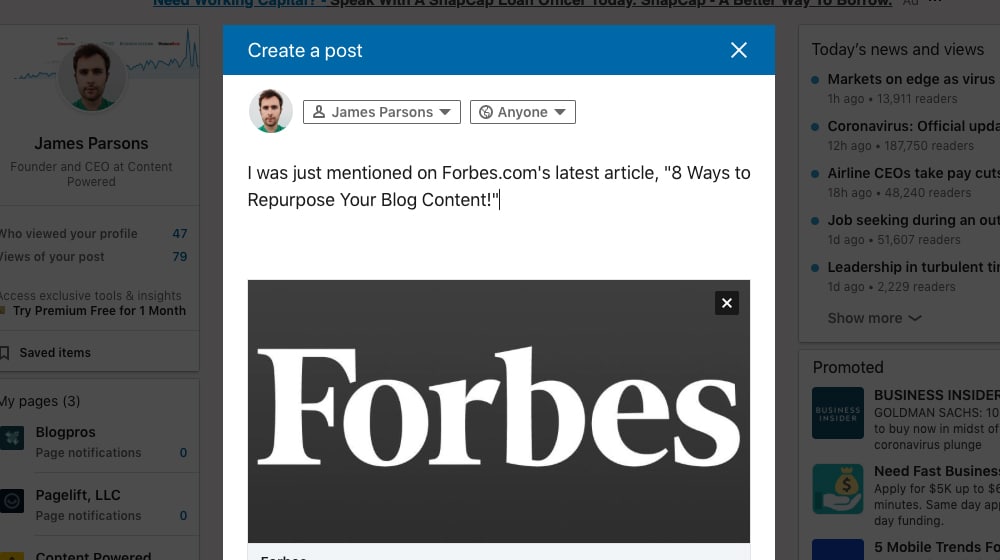
The goal here is two-fold. First, by promoting it, you further build awareness of the citation. Your audience and theirs can start to blend, and maybe you'll pick up some new followers.
Second, you reinforce the idea that you'd like there to be more of a relationship than just this single exchange of information. When you make yourself visible and available without harassing the journalist, you can make yourself valued.
13. Use CisionOne System, but Follow Up
CisionOne gives you the option of using the in-system messaging for your pitches, or to send them via email directly to the journalist. Both options work. Some people prefer CisionOne's system because it's easy for an email to get lost. Others don't really care to check CisionOne and live out of their email.
I find that the best of both worlds is to use CisionOne's system for the initial pitch, but follow up a few hours or a day later via email. That way you can connect with the journalist in both places.
14. Remember Who You've Worked With
I've been building and maintaining a spreadsheet of the people I've contacted, the pitches I've made, and the citations I've received. As it grows, I'm sure to see repeat journalists.

Advice from those journalists that I've seen indicates that they love working with people they recognize, and that doesn't surprise me. If I get the opportunity, I plan to remind anyone I've worked with before that we've worked together, and that alone may be enough to get my pitch accepted. It's all about those relationships!
CisionOne's premium versions are now locked behind a mandatory demo. The old pricing for Connectively and HARO can be found here; they were pretty reasonable. In general, I recommend paying for these pro versions. They give you a "front of the line pass" of sorts so journalists see your pitch before anyone else.
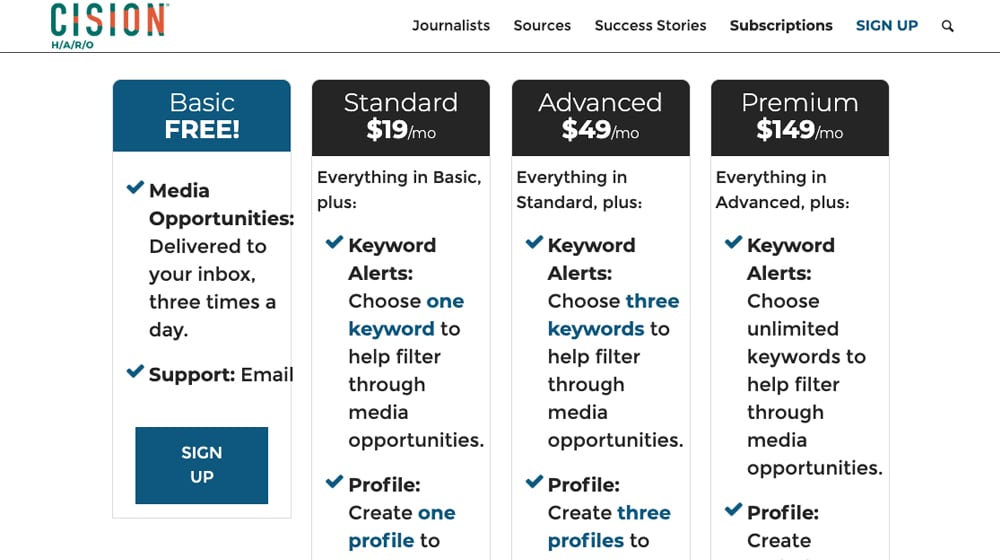
The biggest perk you get for that tier is the head start. Remember how I mentioned that CisionOne moderators approve media opportunities, and then they're released to the early pool before appearing in the general pool? Paying for Advanced or Premium grants access to these early alerts. The extra lead time can allow you to get a pitch ready to go before anyone else has even seen the opportunity, which can be invaluable.
16. Monitor Results
I mentioned way up above that a lot of people who provide media opportunities fail to actually mark them as closed before they expire. I've had a couple of pitches accepted and used, but I was never notified of it. Luckily, I've been recording all of the pitches I send to these sites and occasionally check those sites to see if my information was used. In nearly all cases, my pitch was published to their blog without any notice or email to let me know that it's been published.
You track your progress manually with a spreadsheet (which is what I do), or you can use Google Alerts. Set up Google Alerts for your name, or for a key unique phrase you use in your bio that you don't use elsewhere, to be notified when your pitch is used. That way, you can monitor the link and traffic you get from that source, as well as maintain contact with that journalist in the future.
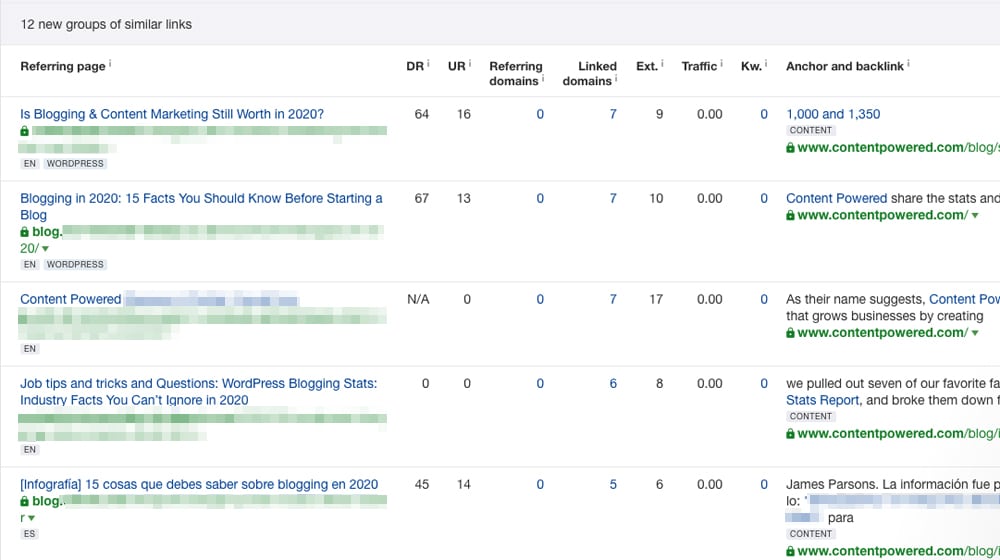
I also like to use a backlink checker like Ahrefs or Monitor Backlinks. I was amazed at how many people used my pitch and linked to my website without letting me know that they've used my pitch.
17. Follow Up Later
The real power of CisionOne is not just in the links and mentions you get, it's in the relationships you build. It's a way to get hooked up with a lot of industry people, writers and bloggers for high-level sites, and more.
Shortly after your pitch is accepted and published, send a thank you email to the journalist. Be sure to mention that you appreciate being cited and that you're always available if they have other questions in your industry that you can answer.
I would also recommend following up with the journalist some time down the road as well. Months later, you can refresh yourself in their minds by reaching out. It helps if you can come up with some reciprocal reason to contact them, like asking for their experience with something, to subtly remind them of why they know you. I'm still relatively new to using CisionOne, though, so I haven't hit that point yet.
18. Keep Going
Tenacity is the number one quality of a successful CisionOne user. A lot of pitches are ignored or are not accepted, and it can get frustrating. I've had a success rate of about one in fifteen, to give you an idea. I don't think I have the most optimized possible pitches, but I know I'm not the bottom of the barrel. There's just a lot of competition. Much like blogging, much like SEO, and much like all aspects of marketing, don't give up. You'll get there eventually.



 30 Second Summary
30 Second Summary



May 25, 2020
Thank you for recommending a backlink checker. I gave up on HARO since nobody accepted my pitches but it turns out they were using my quotes and weren’t notifying me. In fact I’ve had over a dozen people use my quotes – not one email or “Thank you”! This seems like a problem with the service, if sources think they’re wasting their time they are going to leave the site, and without sources the site falls apart.
May 30, 2020
Hi Russel, you're welcome! I think I only had a few people so far email me that they've used my quote and dozens of others have used it without telling me. A service like Ahrefs is definitely a game changer. You can set it up so you get an email every time you get a new backlink, which may be a good idea while you're doing these HATO pitches.
September 10, 2020
I just discovered HARO recently and did sign up. I probably checked off too many interests as I am getting a lot of emails every day which is a bit overwhelming. I'll narrow it down to a more relevant topic maybe as you suggested. I also need to work on my pitch, thanks for this James.
September 12, 2020
Hey Ray! Definitely, you can unsubscribe from the default HAROs, I got pretty tired of getting those emails every day as well. I think I was getting like 8-12 emails per day from them for a while. I like to set up a keyword alert for something related to my industry and just keep the text/email alerts up for that one keyword.
September 24, 2020
Very helpful breakdown... I've read a few articles on this but it was clear whoever wrote them didn't actually have HARO Premium.... good to know what to expect. I hope I have some good results with it like you did.
September 28, 2020
Thanks, Donald!
It works, but pitches are a numbers game. I think out of like every 15 or 20 pitches I'd get one of them that published my quote. Check out my other comment on this post to Russel about a backlink checker. People will seldom let you know that they used your quote, so you might have to actually use some tools to find out if they quoted you.
What was happening with me was it was working and people were quoting me, but nobody let me know. A tool like Ahrefs will pick up those mentions that you weren't notified of.
February 23, 2021
Thanks for this James! Love the excel sheet! Plan on adopting it. Really had a hard time remembering whom I reach out and work with so it's really a good idea!
February 26, 2021
Thanks Olivia! Really glad it helped you.
It's always the little things that I'm not sure that will help people that end up being the biggest hit.
Again, appreciate the feedback 🙂
April 07, 2021
This is helpful. Though just a question, personally, you think pitching in HARO is worth it?
April 07, 2021
Hey Brian!
I think it's worth it, it's just time-consuming. It can be demoralizing to write 20-30 pitches and receive no links from them.
If you get into a good groove and dedicated a few hours each week to knock these out, you can get some great results.
There are also "Done For You HARO" services where you can pay someone to write pitches on your behalf. Or, you can train a freelancer to make pitches for you.
Huge sites are on HARO all the time asking for quotes from experts, and if you reply promptly and with a great quote, you have a good chance of being added to their article.
July 21, 2021
Hey James, if I sign up for the paid subscription, can I unsubscribe whenever I want? I just want to try the premium subscription to see if it will work for me.
July 24, 2021
Hi Linda!
Yes, of course - you can cancel HARO at any time.
December 10, 2021
This is a great help, James. I just started using HARO and it's a jungle out there.
December 10, 2021
Hey Brian!
Happy to help! You have to find a strange combination of speed, quality, and volume.
These guys get so many pitches each day that you have to stand out somehow with a better angle than everyone else.
You also don't want to spend too much time on a pitch that has better odds of not being published than published. At times, it can get frustrating, but the juice can be worth the squeeze.
There are also "DFY Haro" services (done for you) that you may consider if you want to outsource this to a pro.
January 06, 2022
Interesting. I never considered using HARO but I might give it a try. Thanks for the comprehensive tips!
January 12, 2022
Thanks John!
I've been using it on and off for a year or so and have secured some great mentions on some large sites. Please let me know how it goes!
Also, remember to track your links, out of every pitch I've ever done I've probably only ever had 2 people tell me that they've accepted it.
You have to actually monitor your links - most will simply take your pitch and publish it without letting you know.